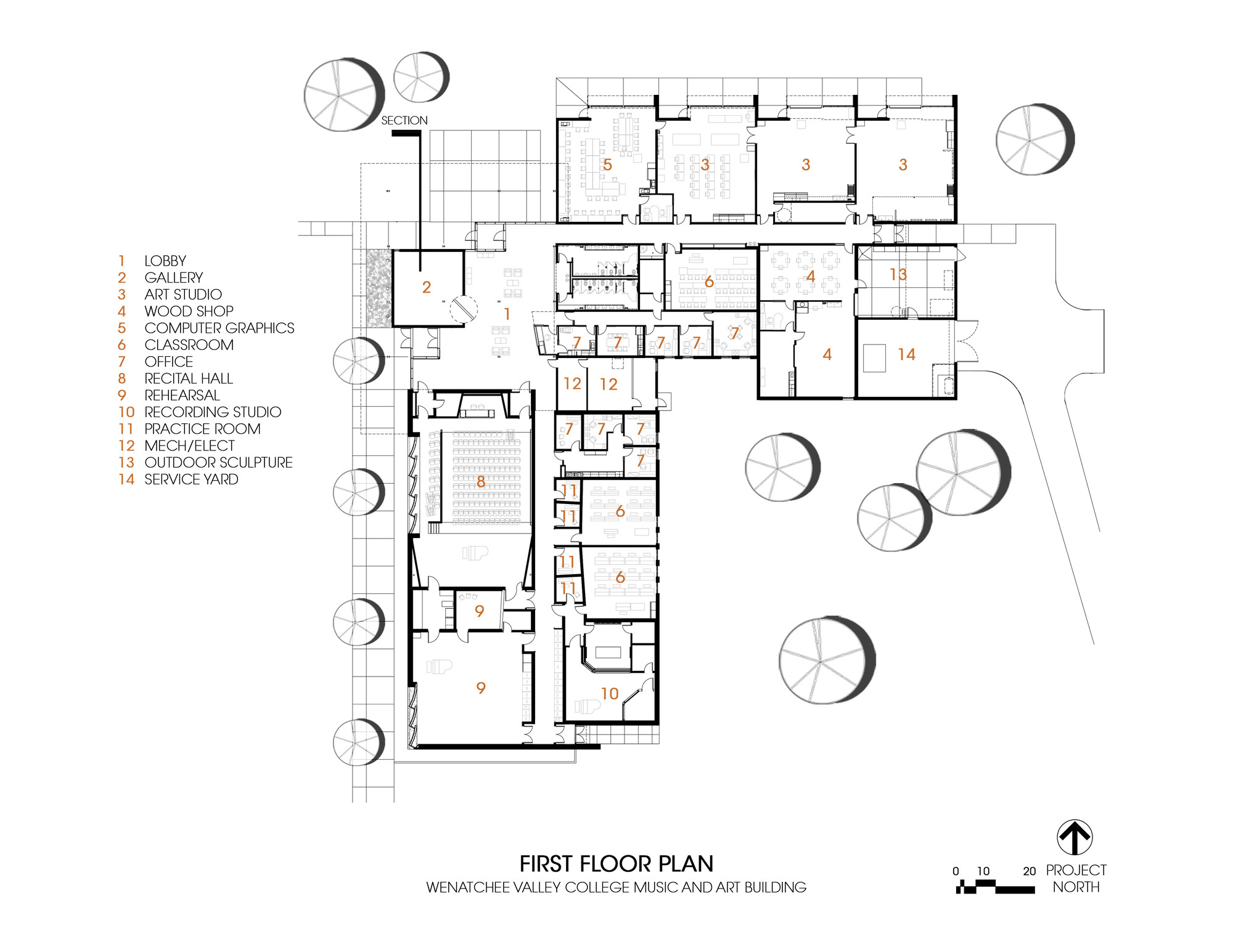
-
Architects: Integrus Architecture
- Year: 2012
-
Photographs:Lara Swimmer Photography

Text description provided by the architects. Located in a popular park-like area of the campus, the new Music and Arts Center was thoughtfully designed to reflect the programs housed within. Shared by the Music and Art programs, the MAC provides much-needed studio space for Art and state-of-the-art, acoustically-designed rehearsal and performance space for Music.

The building’s interior requirements are diverse and specific to enhancing the education missions of each department. The MAC is organized into two distinct wings – Music to the south and Art to the north – with a shared student gallery/lobby area that provides an important, transitional “knuckle” connecting both wings and becoming the heart of the building.

The music program includes a 150-seat recital hall, rehearsal space, recording studios, classrooms, practice and support areas. The fine arts program includes painting, ceramics, sculpture and 2-D design/print-making studios, graphic design studios, classrooms, exhibit and support areas. With a sculptural glass and steel entry, the “knuckle” connects the wings and provides an element of hierarchy for the building. An expansive glass wall adjacent to a covered art patio provides views to the historic Well’s House to the north.

Needing natural light in the art wing, north light is brought into the studios by utilizing large double-height windows. The appropriate placement of windows provides much-needed natural day-lighting for the studios while minimizing summer cooling loads. Versatility is provided in two art studios through the use of overhead garage doors, allowing seasonal expansion and access to the outdoors, while capturing views of the campus to the north. The music wing recital hall features acoustically shaped “gills,” reflecting colored light at the west wall. The building strives to be sculptural and an object of art itself with simple brick planes, metal panels, and hot-rolled steel siding at the student gallery volume that will patina over time, adding more tonal value and texture to this compositional element.

The greatest design challenge was separating the art and music wings (because of unique program needs and diverse system requirements), while preserving the prized setting. The building was strategically sited between valued specimen trees and great care was taken to remove as few trees as possible. For every tree that was removed, three were planted. Overall, the landscape is intended to blend and complement this park-like area of campus while utilizing native grasses and drought tolerant plants in specific areas to minimize irrigation.

Sustainable design initiatives were intentionally incorporated into the design even though LEED Certification was not a high-priority for the owner. As an inherent part of the designer’s philosophy, the issues of sustainable design were at the forefront and resulted in an energy-efficient building currently seeking LEED Silver/Gold Certification.

































.jpg?1403923355)
.jpg?1403923340)
.jpg?1403923381)
.jpg?1403923303)

